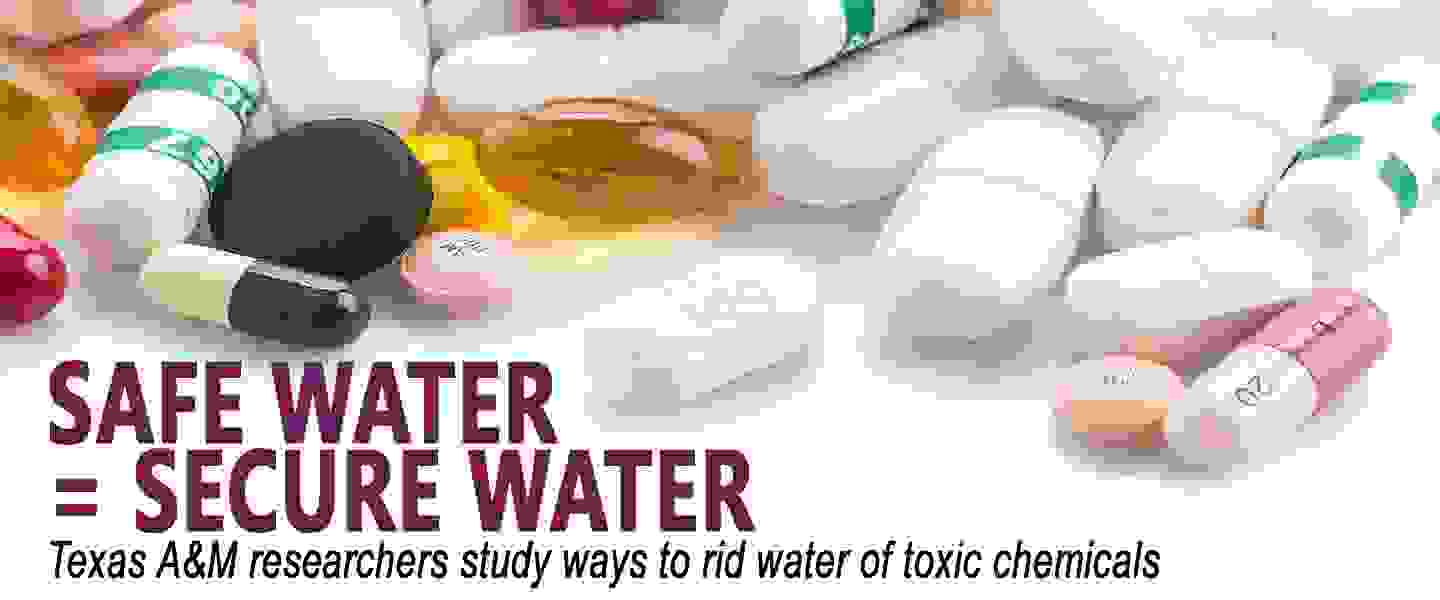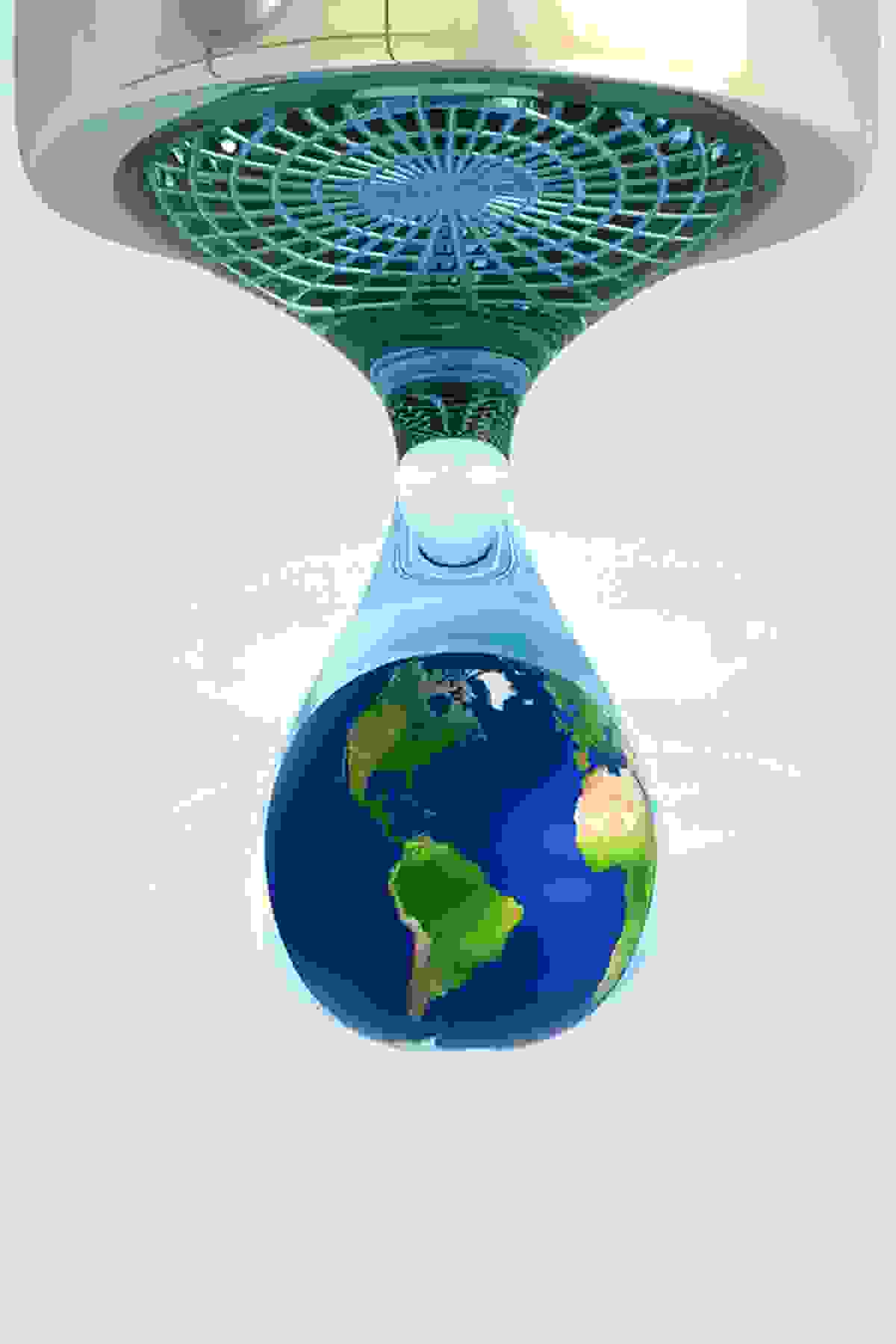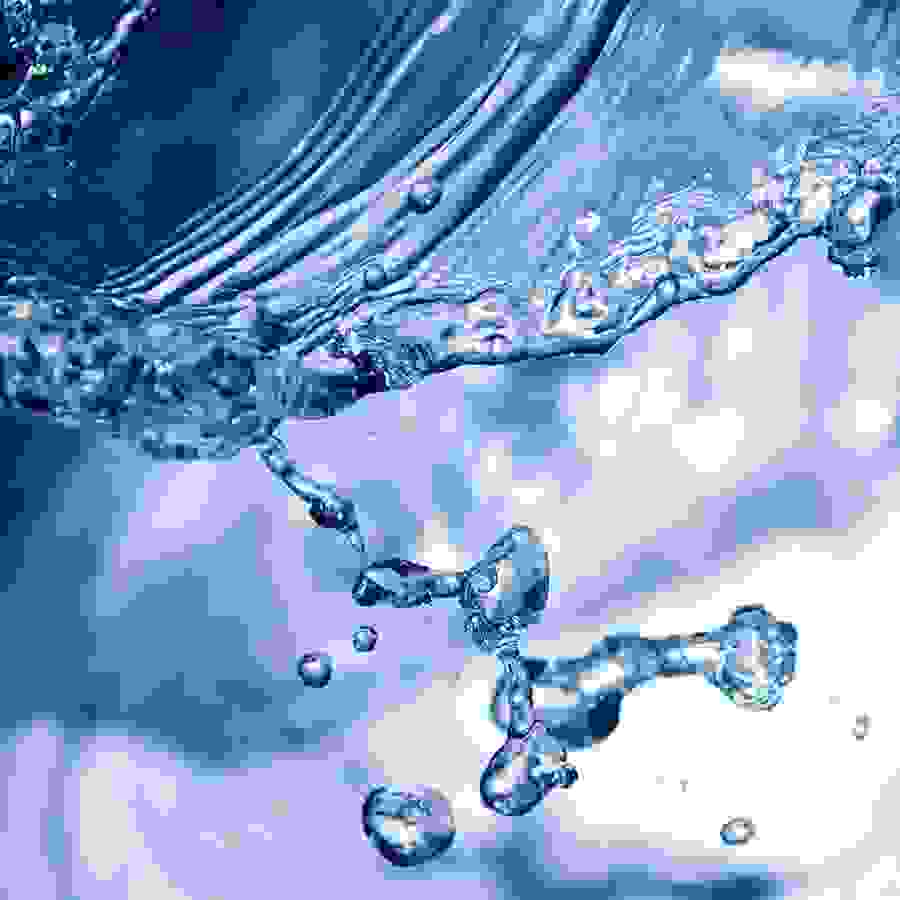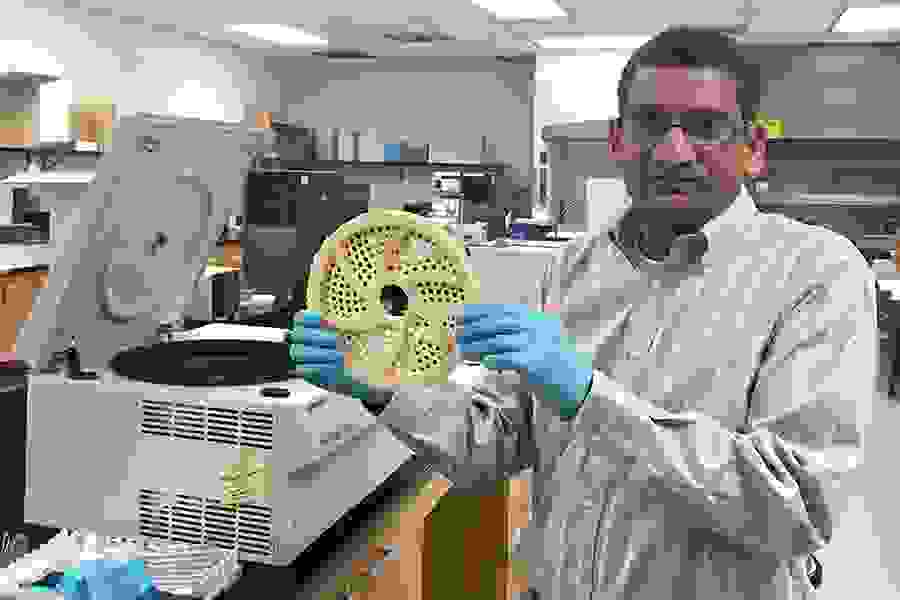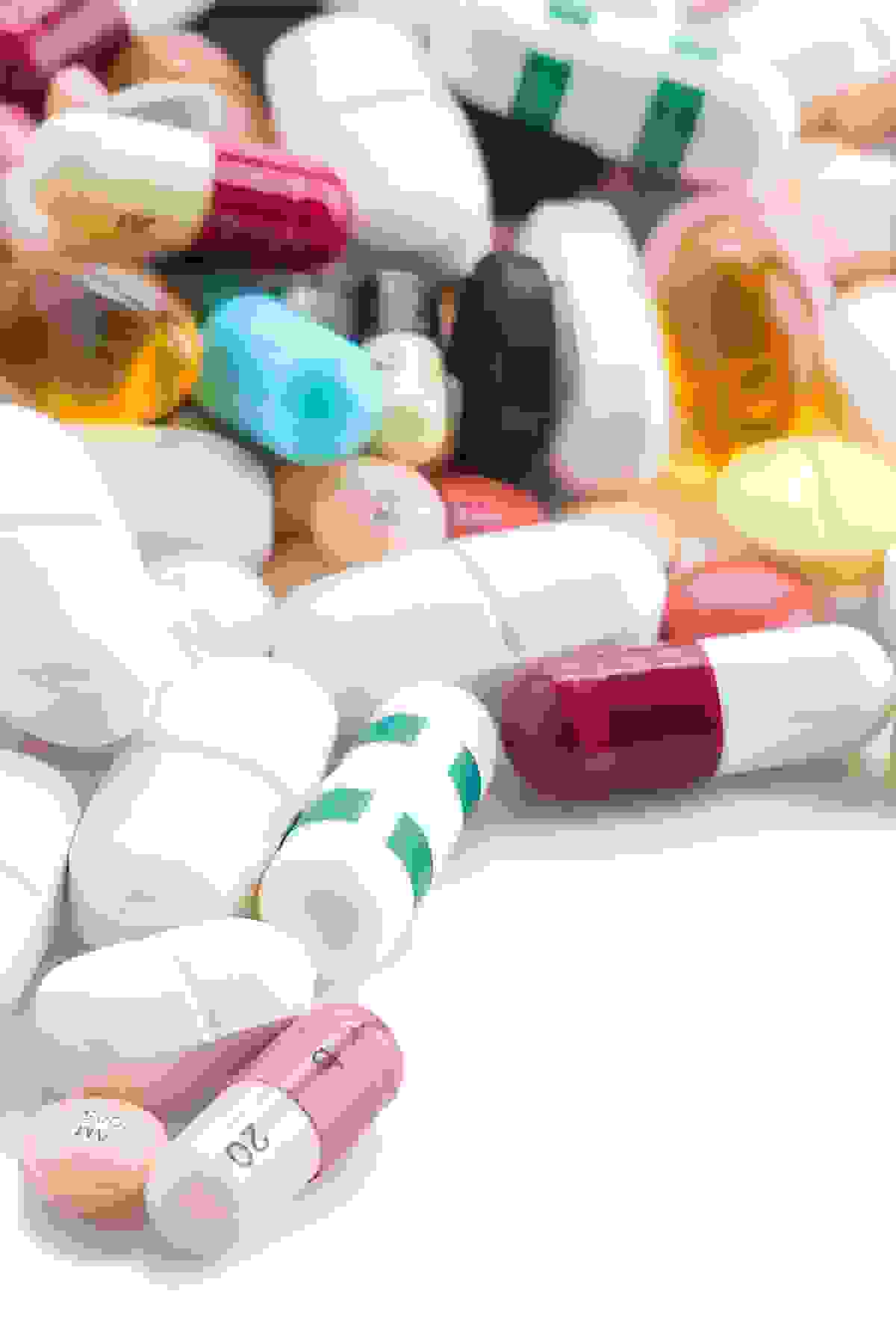What do Starbucks coffee, Chanel No. 5 perfume and Benadryl antihistamine have in common?
All three products are considered pharmaceutical and personal care products, or PPCPs, a broad and growing category of compounds.
Certain components of PPCPs are also part of another category of chemicals, called endocrine disruptor compounds (EDCs), which disrupt the endocrine system of animals and humans. PPCPs and EDCs together are considered contaminants of emerging concern because of their potential risks to public health and the environment.
Scientists across the Texas A&M University campus are studying some of these chemicals, their toxicity and methods to eliminate them from wastewater treatment systems before the treated wastewater is released into the environment.
Dr. Leslie Cizmas, assistant professor in Texas A&M School of Public Health’s Department of Environmental and Occupational Health, said previous research has indicated that some PPCPs or EDCs released into the environment can affect animals, such as algae, fish and invertebrates.
She said while some people might not care about a small organism such as algae, they forget algae are primary producers that feed fish, which then feed other animals up the food chain.
For example, research has shown that environmental EDCs released in the water have caused male fish to develop intersex characteristics, leading to decreased reproductive success, according to Dr. Kung-Hui (Bella) Chu, associate professor in the Zachry Department of Civil Engineering at Texas A&M. “Then the fish production over the years will decline because it is not balanced,” she said.
“We count on the environment to look normal,” Cizmas said. “Even people who don’t care about the environment would notice and be concerned if suddenly half the population of a species died.”
In a recent journal article, Cizmas and her co-authors looked at existing research on PPCPs and their effects on the environment to help scientists better prioritize which compounds to study.
“There are so many pharmaceuticals out there and so little money,” she said, “so prioritizing which compounds to look at is a huge deal. To start doing toxicity testing for each of those is too expensive.”
One way to prioritize, Cizmas said, is to examine quantitative structure activity relationships, which is identifying a problematic compound, then finding related compounds and looking at that class of compounds more closely.
Focusing on compounds that are more frequently purchased and used, not taken out in the wastewater treatment process and more toxic are other ways to prioritize, she said.
Cizmas has identified a particular PPCP compound to use as a tracer molecule in her research on understanding what happens to PPCPs when water is intensively reused. The PPCP tracer is not removed during the wastewater treatment process and is relatively stable in the environment, she said. She recently submitted a proposal for funding such research with other Texas A&M scientists.

First line of defense
Wastewater treatment plants are the first line of defense for removing any harmful PPCPs or EDCs. Cizmas said fat-loving chemical compounds naturally bind to sediment, or solids, and may be taken out of water by the wastewater treatment process. But other PPCPs may not be removed or degraded in the treatment process.
“Some pharmaceuticals do get taken out, and some go right through,” she said.
Chu said removing environmental EDCs during the treatment process was a logical focus for her research to make a difference and positive impact on water quality. “Removing EDCs during the wastewater treatment process is an easier and effective way to minimize release of EDCs into the environment,” she said.
For much of her work, Chu works with bacteria already in wastewater that, under the right conditions, can break down these harmful EDCs into harmless chemicals.
A banned substance
One particular chemical Chu and her group have studied is triclosan, a compound used in more than 700 different industrial and consumer products, such as antibacterial soap, plastic cutting boards and even toys. In September 2016, the Federal Drug Administration (FDA) banned the use of triclosan and 18 other ingredients in antibacterial soap. But triclosan is still used in common household products, such as hairbrushes, sponges, computer keyboards and clothing.
According to the FDA, animal studies have shown that triclosan alters the way some hormones work in the body, and other studies have raised the possibility that triclosan contributes to making bacteria resistant to antibiotics.
In addition to triclosan being a weak endocrine disrupter that can interrupt thyroid function, Chu said with UV exposure, it can also potentially be transformed into compounds that are more toxic when released into the environment.
Using molecular techniques, Chu’s research group determined that the bacterial strain KCY1 is normally present in wastewater and can degrade triclosan. The group correlated the needed amount of cell concentration of the strain to effectively degrade triclosan in wastewater. They have also defined optimal conditions for the bacteria to do its work during treatment.
Effective EDC removal during treatment will be the first gatekeeper for minimizing impacts on eco-health and potential harms to public health.
“For example, this strain might prosper and work better in activated sludge without nitrification, since it is a fast-growing bacterium that can grow on organics,” she said. “For wastewater treatment processes with nitrifying-activated sludge and lower abundance of this strain, other triclosan-degraders, both cultivated or uncultivated, would be responsible for triclosan removal. It will be case-by-case because biological treatment processes used by wastewater treatment plants create and shape different microbial ecology, leading to different removal efficiency for triclosan.”
Chu said the next step could include some pilot-scale testing, but that testing would involve investment by the wastewater industry and that is unlikely to occur unless federal or state wastewater discharge regulations are imposed for triclosan or if more intensive water reuse dictates it.

Governmental oversight
The Safe Drinking Water Act requires the U.S. Environmental Protection Agency (EPA) to review compounds and develop a list of those that might need regulating. This list, called the Contaminant Candidate List, contains industrial chemicals and even naturally occurring elements, among other chemicals. But, because PPCPs are usually present in very low concentrations, there are currently no regulations concerning PPCPs.
EPA also has a human health risk database, called Integrated Risk Information System or IRIS. The agency has prioritized chemicals of concern found in the environment by reviewing human health and animal studies and has created a ranking in terms of carcinogenic and non-carcinogenic effects of the chemicals.
Bacteria to fight 1,4-dioxane
Another chemical Chu’s group is researching is 1,4-dioxane. This known groundwater contaminant is a synthetic industrial chemical used widely as a stabilizer in certain chlorinated solvents, paint strippers, greases and waxes. It is also used in shampoos, detergents and deodorants. Although not yet banned or regulated, Chu said there is growing concern as it has recently been found in surface water in low concentrations. Classified by the EPA as “likely to be carcinogenic to humans,” the agency has established drinking water health advisories but has not established a maximum contaminant level for drinking water.
Chu’s research is using two bacterial strains that are known to produce certain enzymes that can degrade a co-contaminant, trichloroethylene (TCE), but under certain growing conditions can also degrade 1,4-dioxane.
“Our study is looking at effects of various growth substrates to induce the expression of different enzymes and determine the performance of those enzymes in degrading 1,4-dioxane,” Chu said.
Chu said her research has found that using propane to grow these bacterial strains will produce the enzyme that degrades both 1,4-dioxane and TCE.
“But, because toxicity is produced during the degradation process of these compounds, particularly TCE, the bacteria can be damaged by the toxicity,” she said. “Thus, it is a fine line to determine the certain conditions that will work best to degrade both chemicals or target one over the other.”
Future regulation
Although multiple risk assessments have indicated that PPCPs and EDCs are not currently a risk or concern for humans, research into the compounds will continue to be an important area of study, the scientists said.
With more PPCPs being used, more water being reused and more droughts possible in the future, researchers said these products may eventually be regulated.
In the next 50 or 100 years, we are not only going to have bigger populations, but I think we are going to have more intensive water reuse.
“My expectation is that the EDCs will be regulated sooner than any other PPCPs,” Chu said. “Or something that falls in both categories might be regulated sooner.”
Cizmas agreed the effects of these compounds might have a greater impact in the future.
“In the next 50 or 100 years, we are not only going to have bigger populations, but I think we are going to have more intensive water reuse,” Cizmas said, attributing the increased reliance on water reuse to potentially more droughts.
“The key will be how many times does the water get reused and how well are those compounds being taken out before the next cycle of reuse,” she said.
“If we can treat them and they get removed, it is not a problem to keep reusing, but if we have some that make it through the treatment process and get reused, and these same compounds don’t break down easily in the environment, then we could have build-up (of the compounds).”
Ensuring water safety
For both Chu and Cizmas, their work and the work of other scientists is needed to proactively understand and minimize the effects of these compounds even before they are possibly banned or regulated.
“We need to be good stewards of the water,” Cizmas said. “Rather than hoping that water doesn’t get contaminated, we need to be more proactive; it is extremely difficult to clean-up groundwater.”
Chu agreed. “For drinking water safety, scientists and all the research community needs to be more proactive and find the best available technology for removing the contaminants, rather than waiting until these compounds are regulated,” she said.
For example, Chu believes EDCs will eventually affect the human populations, but it will take time to collect the toxicology data to determine this.
“By the time we figure it out and try to find a solution, it will be too late,” she said. “That is the whole concept with my research.”
Explore this Issue
Authors
As the former communications manager for TWRI, Kathy Wythe provided leadership for the institute's communications, including a magazine, newsletters, brochures, social media, media relations and special projects.

